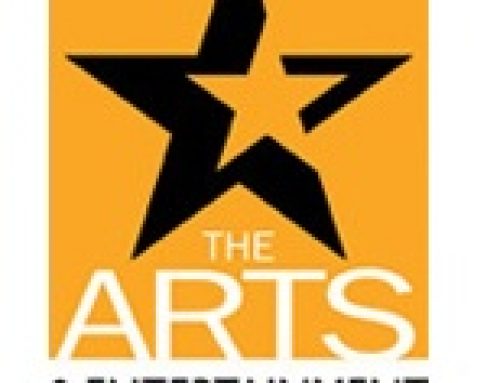HILL STRATEGIES RESEARCH: Economic impact of culture In this issue: Four reports that examine the financial impacts of culture, including a Canadian study of cultural tourists, American reports on the performing arts and cultural industries, and an Italian study of the cultural economy.
The Economic Impacts of Cultural and Sport Tourism in Canada 2007
Department of Canadian Heritage and Industry Canada, March 2009
http://www.pch.gc.ca/pc-ch/org/sectr/inter/pubs-eng.cfm
This brief report examines the economic impact of travellers who attended cultural events, attended sporting events or participated in team sports in 2007. The data, derived from the Travel Survey of Residents of Canada and the International Travel Survey, includes all Canadian travellers as well as overnight visitors from international locations. Two key statistics are measured: gross tourism receipts and net economic impact. Cultural activities include performances, Aboriginal events, festivals, fairs, historic sites, museums and art galleries. If travellers indicated that they participated in cultural and other activities during their visit, then their overall spending was apportioned based on the number of different types of activities in which they participated.
Regarding tourism receipts, the report indicates that tourists who attended cultural activities spent a total of $8.0 billion in 2007, while sports tourists spent $2.1 billion, about four times less than cultural tourists. The spending of cultural tourists “represents 15% of total tourist spending included in this study ($53.5 billion)”.
The areas where cultural tourists spent the most were on transportation ($2.4 billion), accommodations ($1.6 billion), and food and beverages (also $1.6 billion). Cultural tourists spent $721 million on recreation and entertainment in 2007, a figure that includes their expenditures on cultural activities. Examined differently, these figures show that cultural tourists spend at least $10 on other goods and services for every $1 that they spend on recreation and entertainment.
Spending by cultural tourists by province is shown in the following table. The data in the table also show that, on a provincial basis, cultural tourists’ spending patterns are similar to the spending of all tourists.
Cultural Tourism Receipts by Province, 2007
(with comparison to overall tourism receipts by province)
Jurisdiction Cultural tourism receipts
($ millions) Cultural tourism receipts as % of Canada All tourism receipts as % of Canada
Canada $8,034 100% 100%
Ontario $2,963 37% 36%
Quebec $1,743 22% 20%
British Columbia $1,389 17% 18%
Alberta $882 11% 13%
Nova Scotia $288 4% 3%
Manitoba $190 2% 3%
Saskatchewan $174 2% 3%
New Brunswick $144 2% 2%
Newfoundland and Labrador $130 2% 1%
Prince Edward Island $68 1% 1%
Canadian travellers accounted for almost two-thirds of spending by cultural tourists in 2007 ($5.2 billion, or 65%). Overseas cultural tourists spent $1.5 billion (18%), while American cultural tourists spent $1.4 billion (17%) in 2007.
Regarding net economic impact, cultural tourists generated $5.1 billion of economic activity, over 110,000 full-time jobs, and $419 million in government taxes (an estimate that does not include income taxes). Sports tourists generated $1.3 billion of economic activity, over 28,000 jobs, and $100 million in government taxes (also excluding income taxes).
The impacts on Gross Domestic Product were estimated by region, rather than for each province. In 2007, the economic impact of cultural tourists was:
• $1.8 billion in Ontario.
• $1.1 billion in Quebec.
$956 million in British Columbia.
• $893 million in the Prairie Provinces.
• $371 million in the Atlantic Provinces.
The report stresses that these figures should be considered “minimum impact values”, as the “very conservative model” used to estimate economic impacts excludes induced effects, which would capture the re-spending of wages earned by workers in the tourism sector. The model also excludes income taxes from the tax estimates.
Time and Money: Using Federal Data to Measure the Value of Performing Arts Activities National Endowment for the Arts, April 2011
Research Note #102
https://www.arts.gov/
This report examines the monetary and non-monetary value of the performing arts based on a number of different American data sources, including the U.S. Economic Census, the Bureau of Economic Analysis, and the Bureau of Labor Statistics. Among the report’s key findings:
• There are nearly 8,840 performing arts organizations in the United States (with at least one person on payroll). Collectively, these organizations had annual revenues of almost $13.6 billion and over 125,000 paid workers in 2007. These statistics include both for-profit and not-for-profit organizations.
• Americans spent $14.5 billion on performing arts admissions in 2009, compared with spending of $33.8 billion on books, $20.7 billion on sports, $10.4 billion on movie tickets, $6 billion on admissions to museums and libraries, $5.6 billion on musical instruments, and $3.9 billion on photographic equipment.
• “On any given day, 1.5 million Americans attend arts performances, usually with family or friends.”
The report provides a breakdown of the revenue statistics for performing arts organizations. In 2007, for-profit performing arts companies had $8.0 billion in revenues and nearly 54,000 paid workers. Not-for-profit organizations had $5.6 billion in revenues and nearly 74,000 paid workers. Almost one-half of not-for-profit performing arts organizations (46%) had annual revenues below $250,000. On average, American not-for-profit performing arts organizations earned 46% of their total revenues, generated 37% from private sources, obtained 4% from government sources, and generated 13% in other income in 2007.
The report also provides a few time-use statistics that are not related to the performing arts. For example, “about 2.6 million Americans do arts and crafts activities on any given day”. Similarly, on a given day, 557,000 people write for personal interest, and 532,000 visit a museum. In comparison, about 3.4 million Americans go to a movie and 2.7 million attend a sporting event on any given day.
Arts and the GDP: Value Added by Selected Cultural Industries
National Endowment for the Arts, July 2011
Research Note #104
https://www.arts.gov/
Based on data from the U.S. Department of Commerce, this research note provides information about the value added to the American Gross Domestic Product (i.e., contribution to the economy through labor and capital, plus taxes on production) in 2009 from three key industries:
• Publishing (including software publishing) added $147.7 billion to the American economy.
• Performing arts, sports and museums contributed $70.9 billion.
• Motion pictures and sound recording added $59.8 billion to the American economy.
• Combined, these three industries contributed $278.4 billion.
While a breakdown within these groups is not possible from the 2009 data, a more detailed view is provided every five years, the most recent of which pertains to 2002 data. In 2002, the value added by sports was over two times greater than for the performing arts and about three and a half times larger than for museums.
The report indicates that, between 1987 and 2009, “the inflation-adjusted value added by the performing arts, sports, and museums nearly doubled”. The report also notes that this group of industries is prone to business cycle fluctuations, experiencing a 1.4% decrease in value added in 2008 and a 5.5% decrease in 2009.
The two other industries highlighted in the report also experienced recent decreases in value added. The value added by motion pictures and sound recording decreased by 3.5% in 2008 and 2.4% in 2009. The publishing industry experienced a 2.4% increase in 2008 and a 7.1% decrease in 2009.
The report also identifies the state-level value added and employment impacts of the performing arts and heritage organizations.
The economy of cultural heritage and landscape: A systemic and integrated vision The European House-Ambrosetti for the “Florens 2010” Promoting Committee, 2010 http://www.florens2010.com/en/node/27
This study developed the “Florens Index” as a means to compare the cultural and creative sector between eight countries and between Italian regions. The index examines four key elements:
• Cultural and environmental capital, which includes cultural and environmental heritage assets, performing arts activities, visual arts activities, and the teaching of cultural knowledge. This element accounts for 40% of the index score.
• Creative industries, including advertising creation, design, architecture, fashion, wine, gastronomy, “artistic and creative craftsmanship”, and research and development (30% of the index score).
• Media, including broadcasting, books, films, digital media, music distribution, and daily newspapers (20% of the index score).
• Networking opportunities such as trade fairs, digital communications, and lifelong learning opportunities (10% of the index score).
The international comparisons are based on a measurement of 40 indicators related to these key elements in France, Germany, Greece, Italy, Japan, Spain, the United Kingdom, and the United States. The U.S. ranked first on all four key elements, generating an overall index score of 3.45. The United Kingdom ranked second (index score of 3.10), followed by France (2.91), Italy (2.62), Germany (2.56), Spain (2.28), Japan (2.20), and Greece (1.62).
The report also provides findings from a survey on culture of 4, 000 Italian residents and 1,000 residents in the other countries (except Japan, where no survey was conducted). The survey probed public attitudes and behaviours regarding culture, including words commonly associated with “culture”. In Italy, France and the U.S., the word “museum” was most commonly associated with culture. In Spain and Germany, culture was associated with traditional or local customs and festivals. In the United Kingdom, culture was most commonly associated with food, wine and culinary traditions. The Italian survey also found that people between 18 and 24 years of age “associate the words ‘fashion’ and ‘design’ with the concept of culture almost three times more than the Italian average”.
In terms of factors that promote young people’s interest in culture, respondents in all countries indicated that travel and experience are most important. Friends ranked second in four countries (Germany, Spain, the U.K., and the U.S.), while family and social environment ranked second in two countries (France and Italy). School ranked third or fourth in all survey countries. In terms of the factors that discourage involvement in cultural activities, high prices ranked first in all countries. Entry lines or crowding ranked second in four countries (France, Germany, Italy, and Spain), while transportation problems ranked second in two countries (the U.K. and the U.S.).
The survey results also show that interest in cultural events in one’s own city or area of residence is high in Italy, France and Germany, medium-high in the U.K., and medium-low in Spain and the U.S.
Within Italy, the report finds that the Florens Index and regional per capita Gross Domestic Product have a positive and fairly significant correlation.
The report concludes that “the perception of the concept of culture has gradually broadened and is fairly different from country to country. For these reasons, the decision to focus on cultural tourism requires careful evaluation of the ‘real’ cultural expectations of potential tourists.”
The report provides 13 recommendations and policy directions, including “renewed attention to investments in the cultural sector as a strategic industrial policy tool”, “initiatives to support patronage”, and “greater accessibility to culture for young people”.




